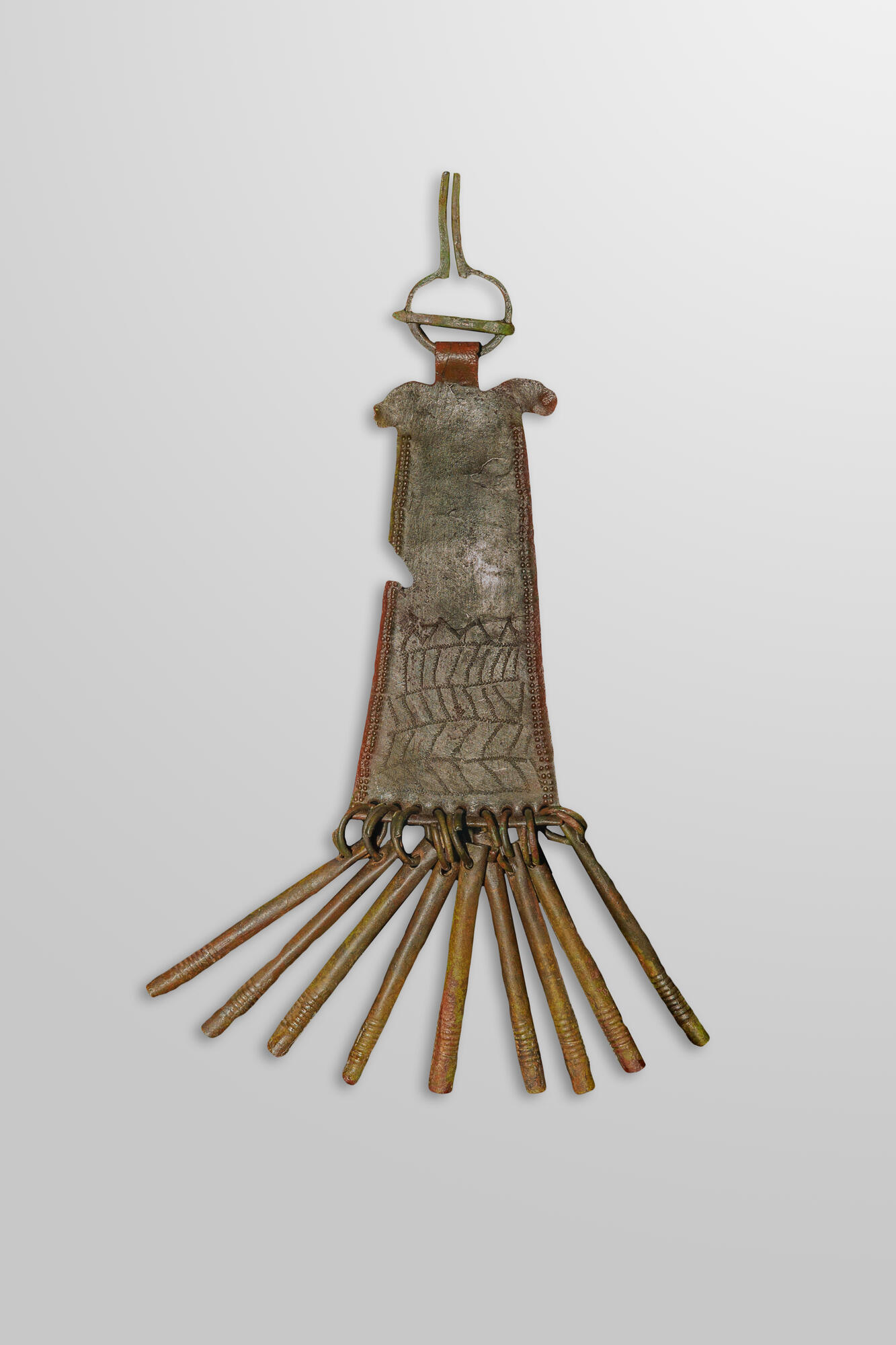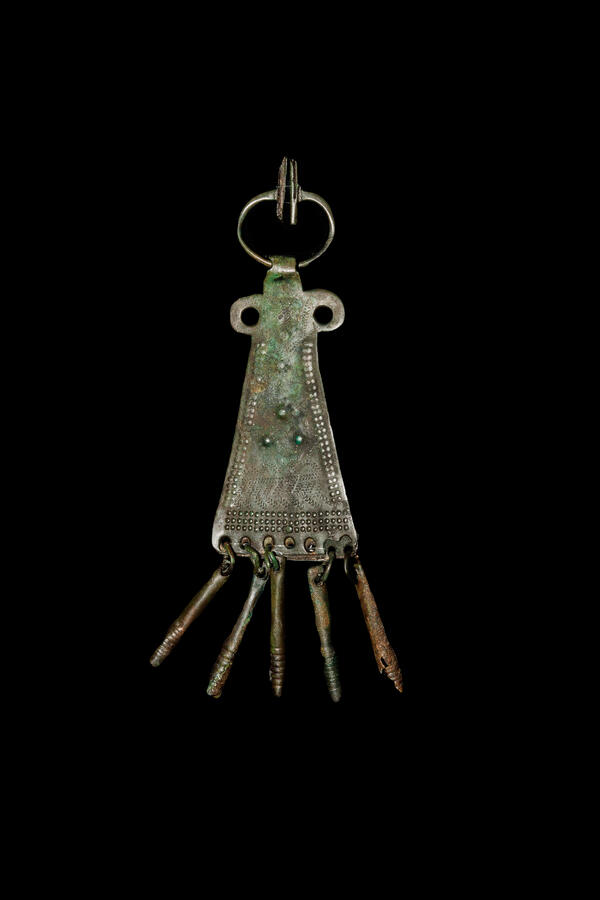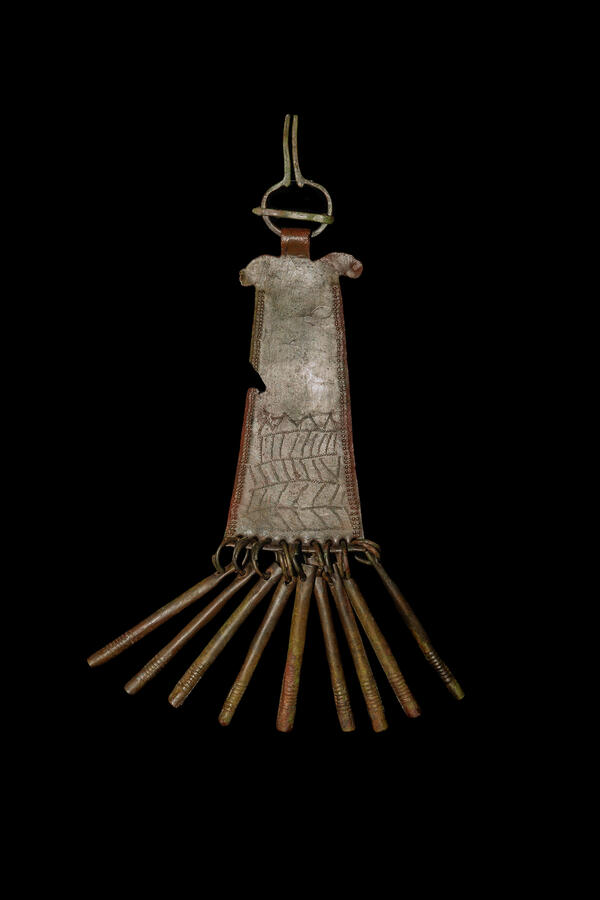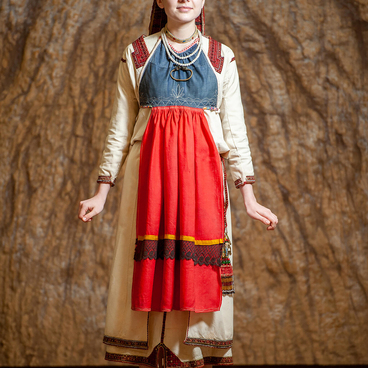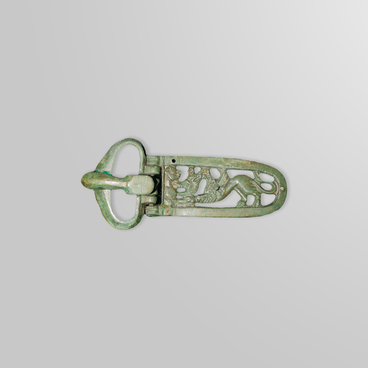Archaeological materials of the 9th–10th centuries testify to the emerging differences in the elements of Moksha and Erzya material culture. A syulgam with rattle pendants functioned both as a clasp and as a talisman. This item is interesting from the point of view of preserving cultural traditions. Up until the early 20th century a syulgam was the central pectoral ornament in a Mordovian woman’s costume. The function, meaning and form of the ornament remained unchanged.
Among the numerous archaeological finds revealing the original character of the ancestral culture, the works of ancient jewelers are worth special attention. The collection gives an idea of the variety of jewelry techniques used: forging, casting, stamping, embossing, engraving, and granulating. Bronze was the basic material of jewelers, while alloys of silver with copper and gold with silver were also used. The sets from Mordovian burial grounds include ornaments with rattle pendants. In the women’s and men’s costumes they served as special signs, determining the social status of the owner, and as amulets with magical meaning. But we cannot exclude the practical significance of the ornaments: with the help of syulgams the unsewn parts of clothes were fastened together.
The syulgam has a shape of an open ring with “whiskers” and a wing needle, a trapezoidal pendant and a plate with pinpoint embossing and notching in the form of herringbone and prongs. There are two ears in the upper part and conical rattle pendants with repoussé work in the form of convex transverse strips in the lower part. In the burials these pendants were found in pairs on the left and right side of the chest. Such pendants can be considered a typical Moksha adornment. No similar articles were found in concurrent monuments of the northern group of the Mordovian population.
The syulgam with a pendant was found in the Zhuravkino burial ground II. This ancient Mordovian archaeological monument is located near the Zhuravkino village of Zubovo-Polyansky district, in southwestern Mordovia on the high left bank of the Vad River. Its excavations were carried out by archaeologists Ivan Peterburgsky and Viktor Vikhlyaev, who explored 76 burials.
Among the numerous archaeological finds revealing the original character of the ancestral culture, the works of ancient jewelers are worth special attention. The collection gives an idea of the variety of jewelry techniques used: forging, casting, stamping, embossing, engraving, and granulating. Bronze was the basic material of jewelers, while alloys of silver with copper and gold with silver were also used. The sets from Mordovian burial grounds include ornaments with rattle pendants. In the women’s and men’s costumes they served as special signs, determining the social status of the owner, and as amulets with magical meaning. But we cannot exclude the practical significance of the ornaments: with the help of syulgams the unsewn parts of clothes were fastened together.
The syulgam has a shape of an open ring with “whiskers” and a wing needle, a trapezoidal pendant and a plate with pinpoint embossing and notching in the form of herringbone and prongs. There are two ears in the upper part and conical rattle pendants with repoussé work in the form of convex transverse strips in the lower part. In the burials these pendants were found in pairs on the left and right side of the chest. Such pendants can be considered a typical Moksha adornment. No similar articles were found in concurrent monuments of the northern group of the Mordovian population.
The syulgam with a pendant was found in the Zhuravkino burial ground II. This ancient Mordovian archaeological monument is located near the Zhuravkino village of Zubovo-Polyansky district, in southwestern Mordovia on the high left bank of the Vad River. Its excavations were carried out by archaeologists Ivan Peterburgsky and Viktor Vikhlyaev, who explored 76 burials.
